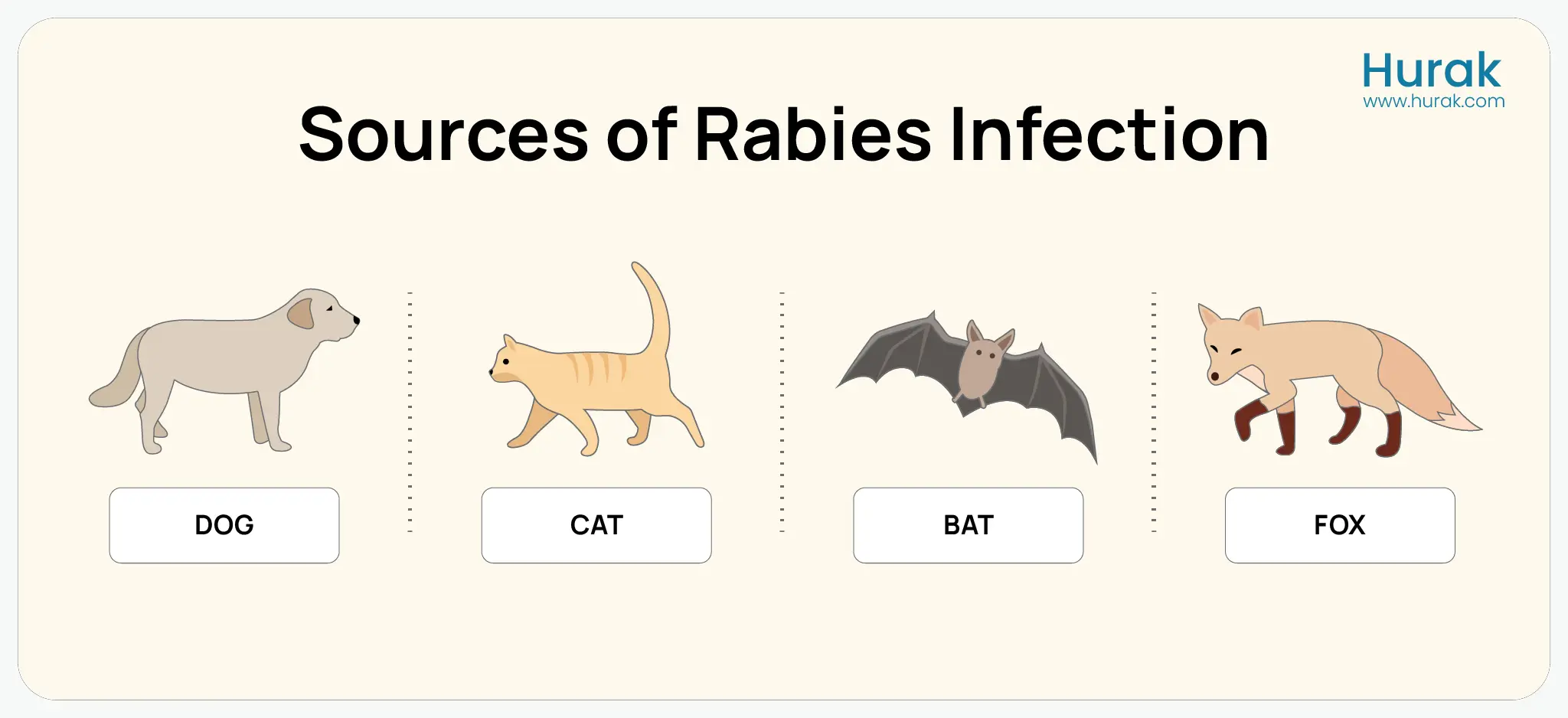Hydrophobia, meaning “fear of water,” is most commonly associated with rabies, a viral disease that attacks the central nervous system. It arises from involuntary throat spasms that make swallowing liquids extremely painful. In severe cases, even the sight, sound, or thought of water can provoke intense anxiety and distress.

Hydrophobia vs aquaphobia: what’s the difference?
Aquaphobia is an intense, irrational fear of water that stems from psychological factors like trauma or anxiety. In contrast, hydrophobia is a symptom of end-stage rabies infection. It involves painful throat spasms that make swallowing liquids extremely difficult. As the condition progresses, even seeing or thinking about water can trigger distress, leading to an intense fear of drinking. To get a better understanding, refer to the table below:
Identifying the symptoms of hydrophobia
Hydrophobia is a significant symptom of rabies that appears in the later stages of infection. It causes severe reactions in the body. Below are the key symptoms associated with hydrophobia and rabies:
- Fever
- Muscle pain
- Agitation
- Irritability
- Nausea and vomiting
- Excessive drooling: As the rabies virus spreads through saliva, it triggers increased saliva production, leading to difficulty swallowing and constant drooling.
- Throat spasms
- An intense fear of swallowing water, even though the person may feel extremely thirsty.
How rabies leads to hydrophobia
Rabies is a viral infection that typically spreads through the bite or scratch of an infected animal. Once inside the body, the virus travels through the nervous system and multiplies. In the final stages of the illness, it causes painful throat spasms that make swallowing difficult. This leads to a fear of drinking liquids, even when the person is extremely thirsty, resulting in a condition known as hydrophobia.
Common animal sources of rabies
Rabies is most commonly transmitted by warm-blooded animals that carry the virus in their saliva. While wild animals are a frequent source, domestic pets can also pose a risk if they are not vaccinated. The animals most often associated with rabies include:
- Bats
- Foxes
- Dogs
- Raccoons
- Cats
- Monkeys

Diagnosing hydrophobia
If you’ve been bitten or scratched by a potentially rabid animal, it’s crucial to seek medical attention immediately, even if no symptoms have appeared. Early diagnosis and timely post-exposure treatment can prevent the virus from progressing. Healthcare professionals may perform several tests to detect rabies, including saliva analysis, skin biopsies, and cerebrospinal fluid testing. Several diagnostic methods are available to confirm rabies infection, particularly in suspected hydrophobia cases. The table below outlines the key tests and what each one involves.
Tests | Description |
Direct fluorescent antibody test | Detects the antigen of the virus in brain tissue |
A skin biopsy | Examines a sample of skin tissue for signs of the virus |
A blood test | Checks for the presence of rabies antibodies in the blood |
A lumbar puncture | Tests cerebrospinal fluid for the presence of rabies antibodies |
How is hydrophobia treated?
There’s no cure once rabies symptoms appear, so acting fast is crucial. Post-Exposure Prophylaxis (PEP) can stop the virus before it takes hold. Here’s what you need to do:
- Clean the wound immediately: Rinse the area with soap and running water for at least 15 minutes. Apply an antiseptic like povidone-iodine at the entry point to kill the virus.
- Get rabies immunoglobulin (RIG): If you haven’t had a rabies vaccine before, it gives you instant protection while your body builds immunity.
- Start the rabies vaccine course: You’ll need four injections on days 0, 3, 7, and 14. If your immune system is weakened, you’ll need a fifth dose on day 28. If you’ve been vaccinated before, just two booster shots (days 0 and 3) are enough, and you can skip the RIG
Frequently Asked Questions
Are hydrophobia and aquaphobia the same?
No, they are different. Hydrophobia is a symptom of rabies infection, while aquaphobia is an irrational fear of water.
Does rabies make you afraid of water?
In the advanced stages of rabies, painful throat spasms can make it extremely difficult to swallow water or any liquid, which may result in a fear of drinking.
Can I get infected by any wild animal?
Rabies can only be transmitted by infected warm-blooded animals such as dogs, bats, and monkeys.
Is hydrophobia curable?
Hydrophobia is not curable once it reaches its advanced stage.
How can hydrophobia be prevented?
It can be prevented by receiving a rabies vaccination and an immunoglobulin injection immediately after exposure to an infected animal.
Explore our range of first aid and mental health training courses
Looking to broaden your first aid knowledge? Here are more expert-led courses we offer at Hurak:
- First Aid at Work: In-depth training for workplace first aiders.
- Emergency First Aid at Work: 1-day course covering basic life-saving techniques.
- Paediatric First Aid: Focused on child and infant emergencies.
- Mental Health First Aid: Learn to support mental health in crises.
Looking for more information on Mental Health First Aid? Visit our Mental Health First Aid courses to explore available training options.





